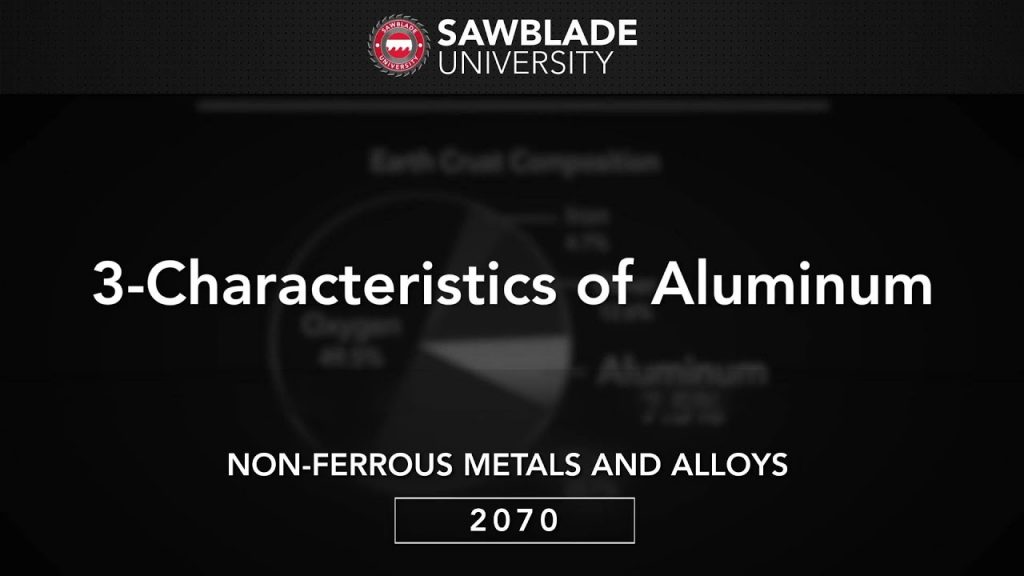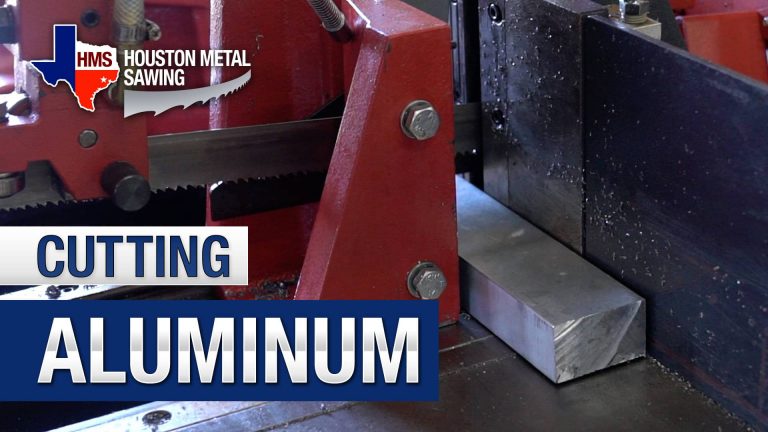Aluminum
Aluminum Product Guide
Aluminum is a widely utilized and readily accessible metal in the commercial sector after steel. And because of its low properties and high strength-to-weight ratio, it is an excellent option for various applications, including machine tools, bicycles, and even aircraft.
Pure aluminum, most often found in the 1000 series of forged aluminum alloys, exhibits low strength but good electrical conductivity, reflectance, and corrosion resistance. However, pure aluminum is not very reflective. This has given a significant amount of progress in developing various aluminum alloys.
Table of Contents
2011 Aluminum vs 6061 Comparison
011 and 6061 aluminum alloys are two popular choices, each with distinct properties and applications. 2011 aluminum, known for its excellent machinability, is often used in precision parts, while 6061, recognized for its versatility and strength, is a go-to for structural components. This comparison explores their characteristics to help professionals make informed decisions, considering factors like strength, corrosion resistance, and workability.
| Property | 2011 Aluminum | 6061 Aluminum |
|---|---|---|
| Composition | Contains higher levels of copper for improved machinability. | Balanced magnesium and silicon alloy, offering a range of mechanical properties. |
| Mechanical Strength | Lower than 6061, suitable for less demanding applications. | Higher, making it ideal for structural applications and heavy-duty use. |
| Machinability | Excellent, best suited for intricate and detailed parts. | Good, but less than 2011, more suitable for general fabrication. |
| Weldability | Moderate, not typically preferred for welding. | Excellent, widely used in welded structures. |
| Corrosion Resistance | Moderate, may require protective coatings in harsh environments. | Higher, particularly when anodized, suitable for outdoor use. |
| Applications | Precision parts, complex geometries, decorative components. | Structural components, marine applications, automotive parts. |
| Cost | Generally more expensive due to its specialized machining properties. | More cost-effective, widely available in various forms and sizes. |
2011 Aluminum
2011 is the aluminum alloy with the highest degree of machinability among those readily accessible. This alloy may be machined to provide high-quality surface finishes.
Apart from the high corrosion resistance level, its weldability, strength, and anodizing reaction are all assessed as being no better than ordinary at best. If the speed at which you can complete your project is more essential than its strength, then 2011 is a fantastic option for you to consider.
| 2011-T3 Aluminum | ||
|---|---|---|
| Minimum Properties | Ultimate Tensile Strength, psi | 55,000 |
| Yield Strength, psi | 43,000 | |
| Brinell Hardness | 95 | |
| Rockwell Hardness | B60 | |
| Chemistry | Aluminum (Al) | 91.2 – 94.6% |
| Bismuth (Bi) | 0.2 – 0.6% | |
| Copper (Cu) | 5.0 – 6.0% | |
| Iron (Fe) | 0.7% max | |
| Magnesium (Mg) | 2.1 – 2.9% | |
| Lead (Pb) | 0.2 – 0.6% | |
| Silicon (Si) | 0.4% max |
2024 Aluminum
Copper is the primary material used for the alloying process in 2024 Aluminium. It has an acceptable amount of machinability and is quite strong compared to most aluminum alloys. This alloy’s copper content renders it sensitive to corrosion; as a result, a clad surface is applied to many of its components to preserve the underlying piece. Aside from that, 2024 isn’t deemed a weldable alloy.
Finally, the improved fatigue tolerance of 2024 makes it an excellent option for applications that may be subjected to lengthy periods of stress or strain. This makes it of high use in aeronautical applications.
| 2024-T3 Aluminum | ||
|---|---|---|
| Minimum Properties | Ultimate Tensile Strength, psi | 70,000 |
| Yield Strength, psi | 50,000 | |
| Brinell Hardness | 120 | |
| Rockwell Hardness | B75 | |
| Chemistry | Aluminum (Al) | 90.7 – 94.7% |
| Chromium (Cr) | 0.1% max | |
| Copper (Cu) | 3.8 – 4.9% | |
| Iron (Fe) | 0.5% max | |
| Magnesium (Mg) | 1.2 – 1.8% | |
| Manganese (Mn) | 0.3 – 0.9% | |
| Silicon (Si) | 0.5% max |
5052 Aluminum
The 5052 alloy is superior to the widely viable 1100 and 3003 alloys in formability and tensile strength. As a result, the metal is best suited for use forming fabrication.
Even though 5052 is one of the strongest alloys in the 5000 series, it cannot be heat treated. It is very resistant to corrosion and may be readily welded. However, due to its middling machinability grade, 5052 is not recommended for intensive machining operations.
| 5052-H32 Aluminum | ||
|---|---|---|
| Minimum Properties | Ultimate Tensile Strength, psi | 33,000 |
| Yield Strength, psi | 28,000 | |
| Brinell Hardness | 60 | |
| Chemistry | Aluminum (Al) | 95.7 – 97.7% |
| Chromium (Cr) | 0.15 – 0.35% | |
| Copper (Cu) | 0.1% max | |
| Iron (Fe) | 0.4% max | |
| Magnesium (Mg) | 2.2 – 2.8% | |
| Manganese (Mn) | 0.1% max | |
| Silicon (Si) | 0.25% max |
6005A Aluminum
The alloy 6005A is very flexible and may be utilized in various applications, including structural and architectural work. This specific alloy finds widespread use throughout multiple industries, including the electrical, automotive, equipment, and industrial sectors. Additionally, it may be used to manufacture conventional and unique forms extruded to create either solid or hollow patterns.
In addition, 6005A-T61 has comparable mechanical qualities to 6061T6 as a medium-strength alloy. The toughness of 6005A is better than that of 6005 and 6105, and the chemical makeup of 6005A makes it more flexible than 6061 alloys. However, the quantity of manganese and chromium content is different in 6005A compared to 6005; therefore, the two numbers should not be confused. Also, ASTM B221, B241, and B429 requirements contain 6005A-T1, T5, and T61 tempers.
Also, the corrosion resistance and finishing properties of 6005A are excellent, making it suitable for anodizing and painting. It is possible to weld and braze Alloy 6005A using different commercial techniques. However, to ensure your safety and the safety of others while working with 6005A alloy, always refer to the material safety data sheet (MSDS).
| 6005A-T6 Aluminum | ||
|---|---|---|
| Physical and Machanical Properties | Ultimate Tensile Strength, Psi | 38,000 |
| Yield Strength, Psi | 35,000 | |
| Brinell Hardness | 95 | |
| Rockwell Hardness | ||
| Chemistry | Si | .5-.9% |
| Fe | .35% | |
| Cu | .30% | |
| Mn | .50% | |
| Mg | .40-.70% | |
| Cr | .30% | |
| Zn | .20% | |
| Ti | .10% |
6061 Aluminum
The most regularly used aluminum alloy is 6061 aluminum. Hence, this material is specified in a wide range of industrial applications due to its high strength, heat treatability, machinability, and weldability. It may also be anodized, which provides an additional layer of protection for final products.
Magnesium and silicon are the alloy’s primary components that makeup aluminum 6061.
| 6061-T6 Aluminum | ||
|---|---|---|
| Physical and Mechanical Properties | Ultimate Tensile Strength, psi | 45,000 |
| Yield Strength, psi | 40,000 | |
| Brinell Hardness | 95 | |
| Rockwell Hardness | B60 | |
| Chemistry | Aluminum (Al) | 95.8 – 98.6% |
| Chromium (Cr) | 0.04 – 0.35% | |
| Copper (Cu) | 0.15 – 0.40% | |
| Iron (Fe) | 0.70% | |
| Magnesium (Mg) | 0.8 – 1.2% | |
| Manganese (Mn) | 0.15% max | |
| Silicon (Si) | 0.4 – 0.8% | |
| Zinc (Zn) | Zinc (Zn) | 0.25% |
6063 Aluminum
The 6063 is another popular form of aluminum. The surface quality of 6063 aluminum is much smoother than that of the other widely viable alloys, which is why it is often referred to as architectural aluminum. The other factor is that its power is much lower than that of 6061 aluminum, which makes it more suitable for purposes in which power is not the primary factor to be considered.
Also, the 6063 is graded according to its usability. It is graded as “Good” for forming and cold working, “fair for machining,” and ”Excellent” for anodizing.
| 6063-T52 Aluminum | ||
|---|---|---|
| Minimum Properties | Ultimate Tensile Strength, psi | 27,000 |
| Yield Strength, psi | 21,000 | |
| Brinell Hardness | 60 | |
| Chemistry | Aluminum (Al) | 97.5% max |
| Chromium (Cr) | 0.1% max | |
| Copper (Cu) | 0.1% max | |
| Iron (Fe) | 0.35% max | |
| Magnesium (Mg) | 0.45 – 0.90% | |
| Manganese (Mn) | 0.1% max | |
| Silicon (Si) | 0.2 – 0.6% |
7075 Aluminum
Another form of aluminum is the 7075. This is an “aircraft grade” aluminum is 7075. It is made up of zinc and copper, the primary alloying materials that go into it, making it one of the aluminum alloys with the capacity to withstand the most incredible amount of pressure. Even at the T6 temper, its normal strength is greater than most mild steels.
Additionally, 7075 offers acceptable to excellent machinability, corrosion resistance, and anodizing reaction ratings. In contrast to 2024, it is also not thought to be weldable.
| 7075-T6 Aluminum | ||
|---|---|---|
| Physical and Mechanical Properties | Ultimate Tensile Strength, psi | 83,000 |
| Yield Strength, psi | 73,000 | |
| Brinell Hardness | 150 | |
| Rockwell Hardness | B87 | |
| Chemistry | Aluminum (Al) | 87.1 – 91.4% |
| Zinc (Zn) | 5.1 – 6.1% max | |
| Copper (Cu) | 1.2 – 2.0% | |
| Chromium (Cr) | 0.18 – 0.28% | |
| Iron (Fe) | 0.5 max | |
| Magnesium (Mg) | 2.1 – 2.9% | |
| Manganese (Mn) | 0.3% max |
Request For Quote

Monday through Friday
8:00 AM to 5:00 PM Central Time
Houston, Texas 77093
Our sawing capabilities include a large range of metals, castings, plastics or molded parts. You can count on Houston Metal Sawing to deliver your parts on time and within budget.






